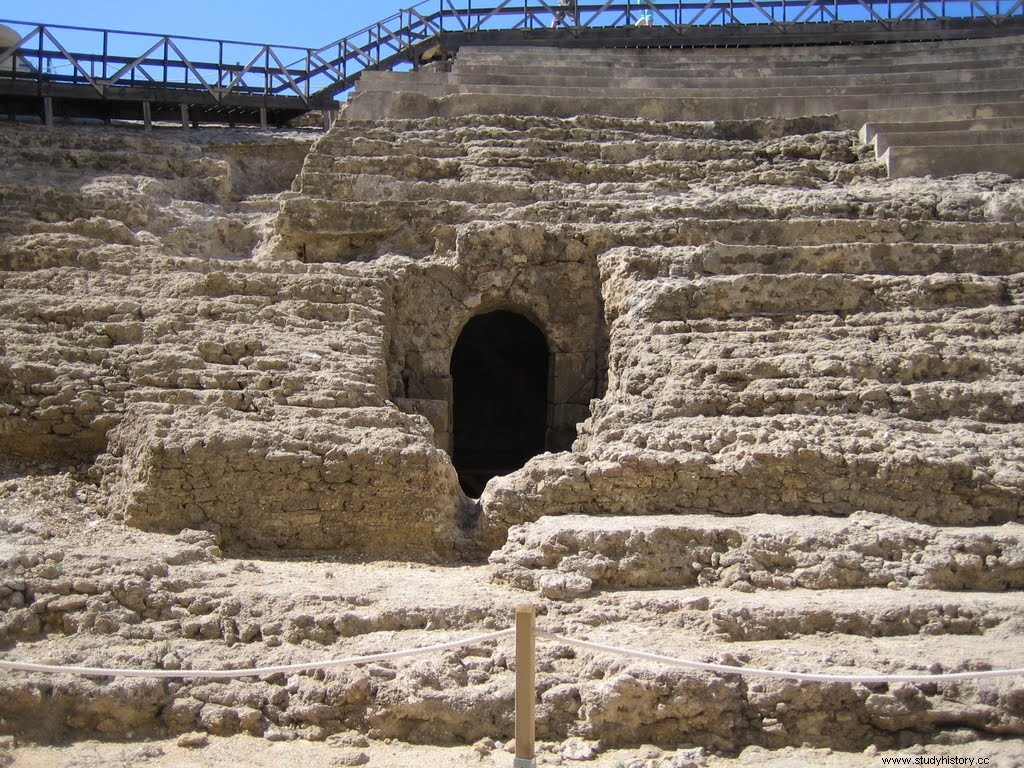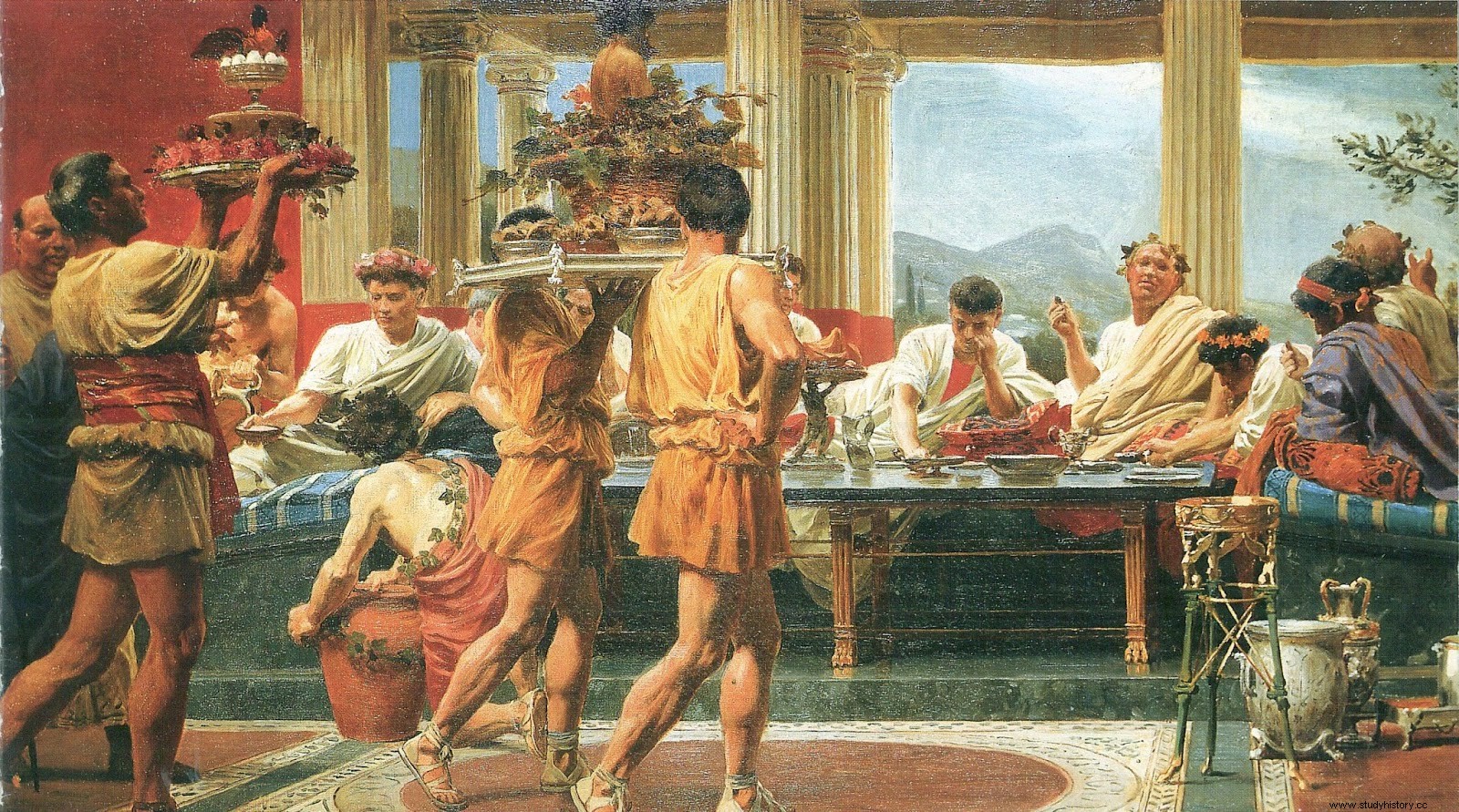That image that has been engraved in our retina of great bacchanals in Rome in which people ate and drank as if there were no tomorrow, and where in order to continue swallowing the Romans made themselves vomit... it's an urban legend . Logically, not in relation to the bacchanals, but in relation to vomiting and the supposed place where this practice was carried out –vomitorium – aided by a feather to tickle the throat.

vomiting (plural of vomitorum ) were the doors or openings of the amphitheaters, circuses or theaters of ancient Rome to enter and exit the stands. In the Colosseum there were 76 vomitoria that allowed the evacuation of 50,000 people in just 15 minutes. So, why has this image of those vomitoria survived to this day? ?
The first reference, in this case to the term «vomitoria», does not appear until the end of the 4th century in Saturnalia . In this work, written by Macrobio , the conversations and dialogues of 12 Roman scholars are recounted during the three banquets in a row that they celebrated in the Saturnalia. The reference to the gargantuan banquets and vomiting can be found in the Satyricon Petronius, Life of the Twelve Caesars of Suetonius or in the Roman history Cassius Dio. In these works, for example, the emperor Claudius always ended his dinners bloated from excess food and wine, and before going to bed he used a feather to make himself vomit; or the emperor Vitellius who supposedly gave four feasts a day and vomited between one and the other. Seneca himself wrote…
They vomit to keep eating, and they eat in a way that they may vomit later.

The reality is that these authors included these stories to entertain their readers and, above all, to describe emperors and possible people guided by greed, gluttony, pleasure and the inability to maintain control... how to make themselves vomit to Keep eating. Vomiting was a medical treatment for excesses, more than a habitual practice, but if you take an idea from here, a detail from there and macerate it with imagination... in the end it turns out that the vomitorium It was the room where the Romans made themselves vomit.
Also contributing to this misconception would be the publication of the comic novel Antic Hay (1923) by Aldous Huxley in which, inspired by Trimalcion's banquet in the Satyricon, the term vomitorium is literally included...
The door of his sacred cabinet burst open and he entered, like a Goth into Petronius's elegant marble vomitorium, a haggard and disheveled person...
So, nothing to provoke vomiting to continue eating and, much less, that they had some habitat for it.
Sources:The truth about the vomitorium, Vomiturium, the confusion of a term
